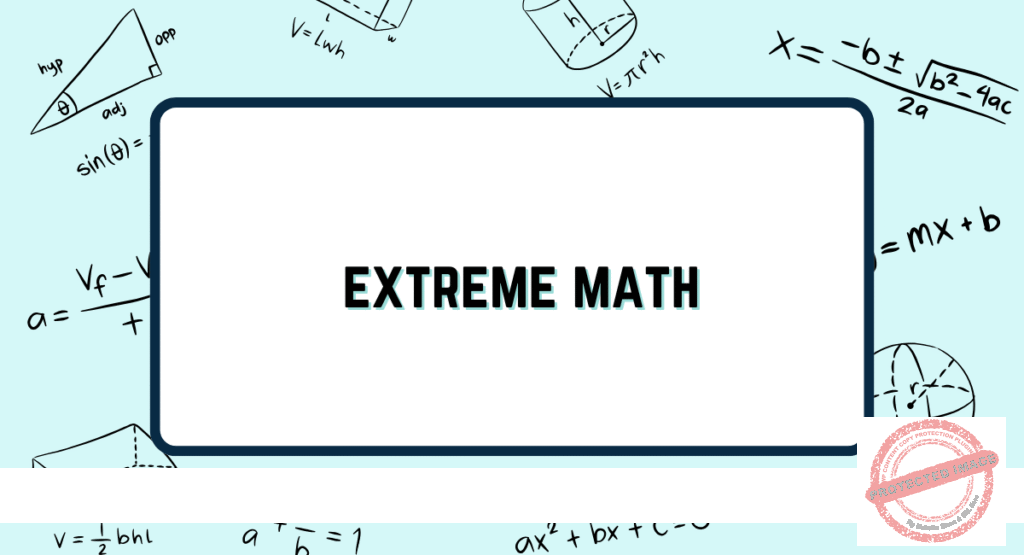Introduction:
When Math Meets Mystery
Most people view extreme math as numbers and equations in school, but the reality is much more intense. At the very top of mathematics, there are problems so intricate, so mentally challenging, that only the world’s best minds can aspire to solve them.
Some of them have puzzled mathematicians for centuries. Others are so fresh that few people really know the questions, never mind the solutions. These are the hard math problems the Everest of academia where glory, million-dollar awards, and even mathematical immortality hang for those who solve them.
In this article, we’ll explore some of the most extreme math challenges known today problems that push the limits of logic, creativity, and mental endurance.
The Riemann Hypothesis
The Problem:
Asked in 1859 by Bernhard Riemann, this hypothesis concerns the distribution of prime numbers and a particular complex function named the Riemann zeta function. It claims that all “non-trivial” zeros of said function occur on a line of criticality in the complex plane: Re(s) = ½.
Why It’s extreme math:
The hypothesis relates very much to number theory, chaos theory, and even quantum mechanics. It is one of the seven Millennium Prize Problems with a prize of $1 million for a correct proof. So far, though there is a mountain of numerical evidence, nobody has managed to prove it.
The Birch and Swinnerton Dyer Conjecture
The Problem:
This issue connects algebraic geometry and number theory, and deals with rational points on elliptic curves the type of curves used to define many cryptographic systems. The conjecture foretells a connection between the number of solutions and a related L-function.
Why It’s Extreme
It’s notoriously difficult because it involves comprehending extremely deep structures within contemporary mathematics. As with the Riemann Hypothesis, it is a Millennium Prize Problem. Its solution would revolutionize what we know about encryption, algorithms, and higher arithmetic.
Navier-Stokes Existence and Smoothness
The Problem:
Do we always have smooth (differentiable) solutions to the Navier-Stokes equations, which govern the motion of fluid materials such as water and air?
Why It’s Extreme:
While we apply these equations to engineering and meteorology, their complete behavior is not extreme math known. Turbulence the random whirls in fluids is particularly troublesome. Demonstrating general solutions exist (and are smooth) is another Millennium Prize Problem.
The Collatz Conjecture (3n+1 Problem)
The Problem:
Take any positive integer. If it is even, divide it by 2. If it is odd, multiply it by 3 and add 1. Keep repeating this. The conjecture suggests that whatever number you begin with, eventually you will arrive at 1.
Why It’s extreme math:
It seems easy, but despite decades of research, nobody has established it as true or false for all numbers. It’s been confirmed for numbers up to 2⁶⁰, but mathematicians believe there must be a more profound, more intricate behavior at work or an utter absence of structure.
The P vs NP Problem
The Problem:
In computer science, “P” refers to the set of problems solvable quickly (in polynomial time). “NP” refers to problems for which a solution can be quickly verified. The grand question: Is every problem that is quickly verifiable also quickly solvable?
Why It’s extreme math
This is likely the most well-known unsolved problem in theoretical computer science. If P = NP, encryption would collapse as we know it. This is another of the Millennium Prize Problems — and likely the one with the greatest practical implications.
The Hodge Conjecture
The Problem:
This problem concerns the intersection of algebraic geometry and topology. It asks whether certain kinds of geometric data (cohomology classes) come from algebraic varieties — which are solutions to polynomial equations.
Why It’s extreme math:
Understanding this would reveal deep truths about the structure of mathematical spaces. It requires fluency in algebra, topology, and complex geometry, making it one of the most conceptually advanced problems ever posed.
The Twin Prime Conjecture
The Problem:
Are there infinitely many pairs of prime numbers which have a difference of exactly two (such as 11 and 13, or 29 and 31)?
Why It’s extreme math:
Even with huge advances in number theory and computational methods, no one has yet conclusively established this conjecture. Recent advances (such as bounded gaps between primes) hold out hope, but the complete proof remains elusive.
The Erdős–Straus Conjecture
The Problem:
It asserts that for all integers n ≥ 2, the equation 4/n = 1/x + 1/y + 1/z has a solution in positive integers. It’s an elegantly simple equation and an infuriatingly hard problem.
Why It’s extreme math:
Confirmed true up to trillions, but no general proof. It’s one of those beautiful brain-teasers that entices mathematicians in, only to ensnare them in infinite tangles.
The Goldbach Conjecture
The Problem:
All even numbers larger than 2 can be expressed as a sum of two primes.
Why It’s extreme math:
It’s been verified up to enormous numbers the quintillions but still hasn’t been proved. It’s at the center of additive number theory and still prompts both professional and amateur mathematicians to take on the challenge.
Beal’s Conjecture
The Problem:
If A^x + B^y = C^z, with all positive integers A, B, C, x, y, and z satisfying x, y, z > 2, then A, B, and C share a common prime factor.
Why It’s extreme math:
It generalizes Fermat’s Last Theorem and is tied to the outer reaches of number theory. Unproved, but for a prize of $1 million for solving it.
Conclusion: The Ultimate Brain Battles
These are extreme math problems not exercises for the classroom, but intellectual frontiers, each of which encodes a fundamental mystery about numbers, geometry, logic, and the universe. Some of them have the potential to unlock new technology, transform computer science, or uncover hidden order in nature. Others merely push the boundaries of human intellect.
Fewer minds on the planet might be able to solve them but every problem solved starts with curiosity, determination, and imagination.
Call to Action:
Are you ready for the challenge?
Begin small, dig deep, and investigate these mathematical enigmas you never know when the next breakthrough mind could be yours.







